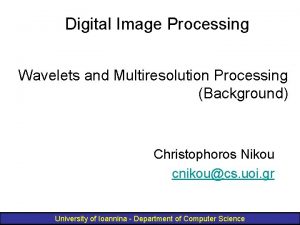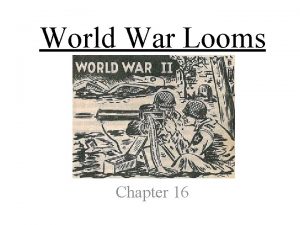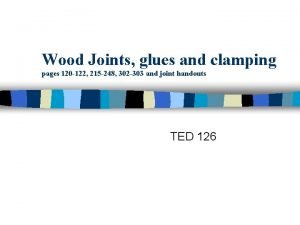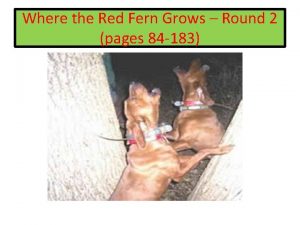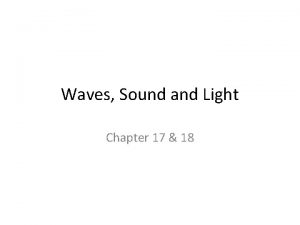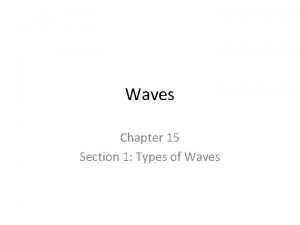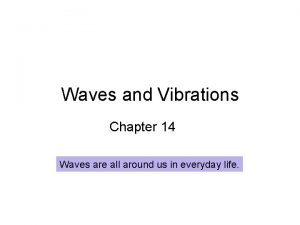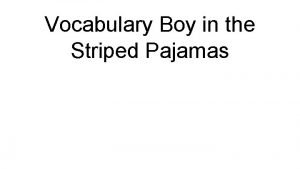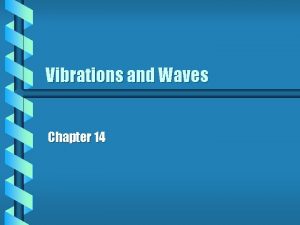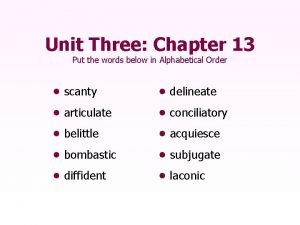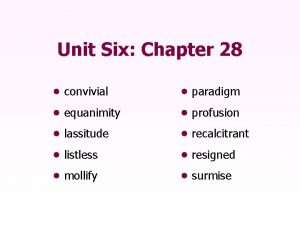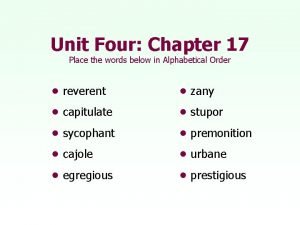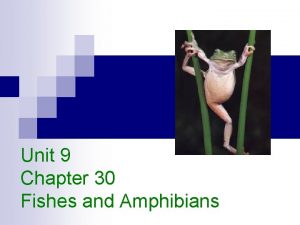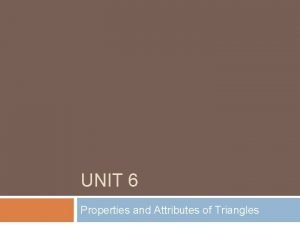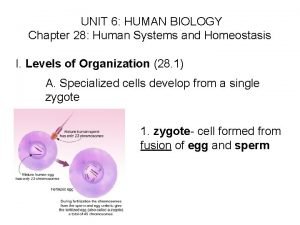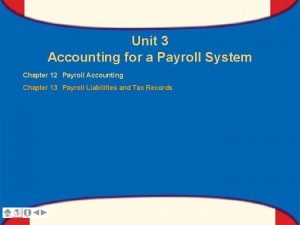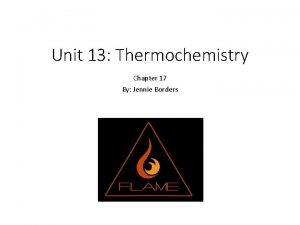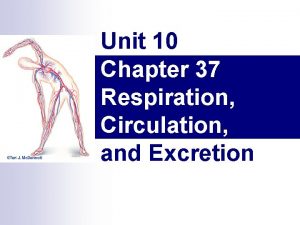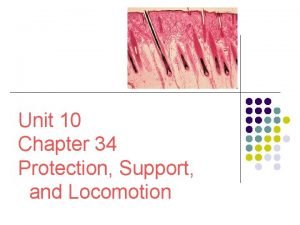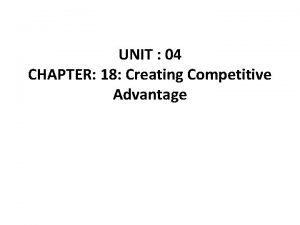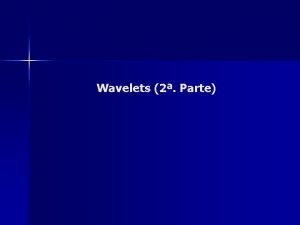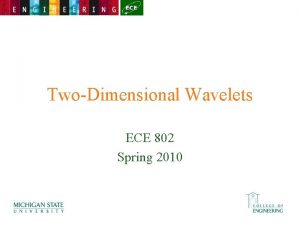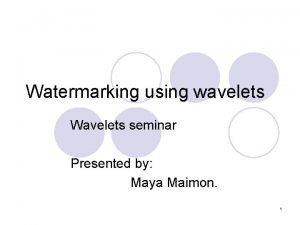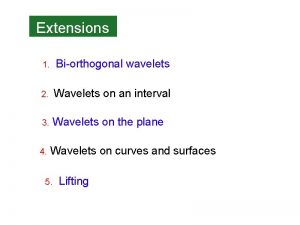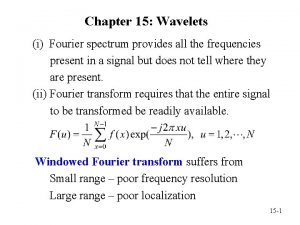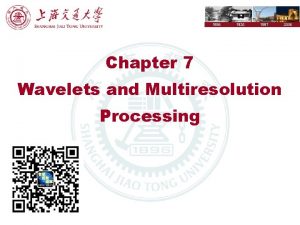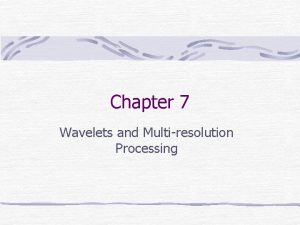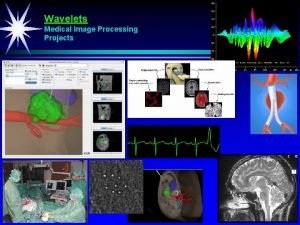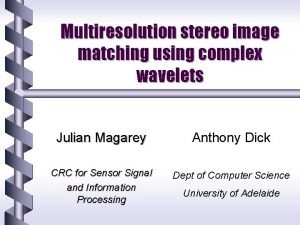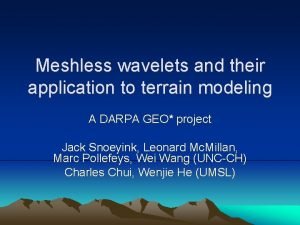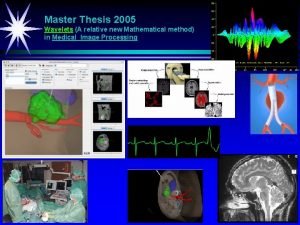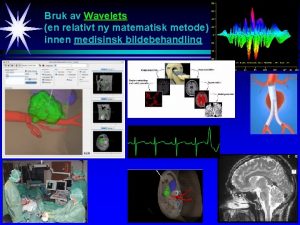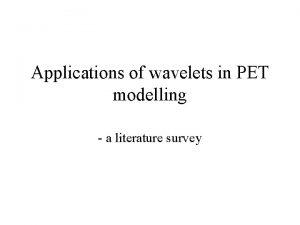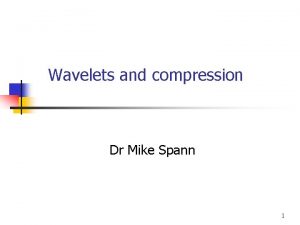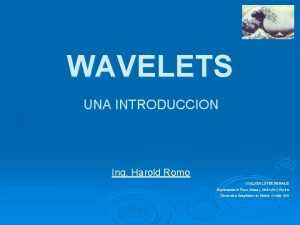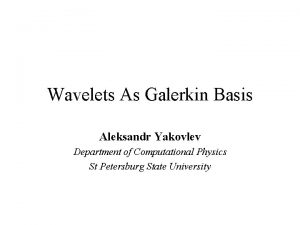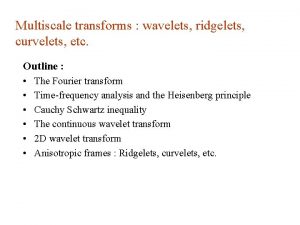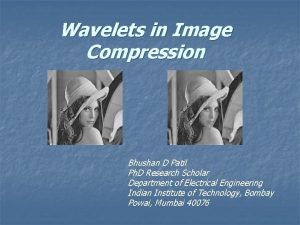Wavelets Chapter 7 What are Wavelets Wavelets are











































































![Example - Haar basis (revisited) [9 7 3 5] low-pass, down-sampling (9+7)/2 high-pass, down-sampling Example - Haar basis (revisited) [9 7 3 5] low-pass, down-sampling (9+7)/2 high-pass, down-sampling](https://slidetodoc.com/presentation_image_h2/6922a02452d28dda9d4c23d89aa55dce/image-76.jpg)

![Example - Haar basis (revisited) [9 7 3 5] low-pass, down-sampling high-pass, down-sampling V Example - Haar basis (revisited) [9 7 3 5] low-pass, down-sampling high-pass, down-sampling V](https://slidetodoc.com/presentation_image_h2/6922a02452d28dda9d4c23d89aa55dce/image-78.jpg)
































- Slides: 110

Wavelets (Chapter 7)

What are Wavelets? • Wavelets are functions that “wave” above and below the x-axis, have (1) varying frequency, (2) limited duration, and (3) an average value of zero. • This is in contrast to sinusoids, used by FT, which have infinite energy. Sinusoid Wavelet

What are Wavelets? (cont’d) • Like sines and cosines in FT, wavelets are used as basis functions ψk(t) in representing other functions f(t): • Span of ψk(t): vector space S containing all functions f(t) that can be represented by ψk(t).

What are Wavelets? (cont’d) • There are many different wavelets: Haar Morlet Daubechies

What are Wavelets? (cont’d) (dyadic/octave grid)

What are Wavelets? (cont’d) j scale/frequency localization space localization

Continuous Wavelet Transform (CWT) Translation parameter, measure of time Scale parameter Normalization (measure of frequency) constant Forward CWT: Continuous wavelet transform of the signal f(t) Mother wavelet (window) Scale = 1/j = 1/Frequency

CWT: Main Steps 1. Take a wavelet and compare it to a section at the start of the original signal. 2. Calculate a number, C, that represents how closely correlated the wavelet is with this section of the signal. The higher C is, the more the similarity.

CWT: Main Steps (cont’d) 3. Shift the wavelet to the right and repeat steps 1 and 2 until you've covered the whole signal.

CWT: Main Steps (cont’d) 4. Scale the wavelet and repeat steps 1 through 3. 5. Repeat steps 1 through 4 for all scales.

Coefficients of CTW Transform • Wavelet analysis produces a time-scale view of the input signal or image. space

Continuous Wavelet Transform (cont’d) • Inverse CWT: double integral!

FT vs WT weighted by F(u) weighted by C(τ, s)

Properties of Wavelets • Simultaneous localization in time and scale - The location of the wavelet allows to explicitly represent the location of events in time. - The shape of the wavelet allows to represent different detail or resolution. space

Properties of Wavelets (cont’d) • Sparsity: for functions typically found in practice, many of the coefficients in a wavelet representation are either zero or very small. • Linear-time complexity: many wavelet transformations can be accomplished in O(N) time.

Properties of Wavelets (cont’d) • Adaptability: wavelets can be adapted to represent a wide variety of functions (e. g. , functions with discontinuities, functions defined on bounded domains etc. ). – Well suited to problems involving images, open or closed curves, and surfaces of just about any variety. – Can represent functions with discontinuities or corners more efficiently (i. e. , some have sharp corners themselves).

Discrete Wavelet Transform (DWT) (forward DWT) (inverse DWT) where

DFT vs DWT • FT expansion: one parameter basis or • WT expansion two parameter basis

Multiresolution Representation using narrower, small translations fine details j coarse details

Multiresolution Representation using fine details j coarse details

Multiresolution Representation using fine details wider, large translations j coarse details

Multiresolution Representation using high resolution (more details) j … low resolution (less details)

Approximation Pyramid (revisited) low resolution j=0 scale=1/j high resolution j=J

Image Pyramids 24

Prediction Residual Pyramid (revisited) • Prediction residual pyramid can be represented more efficiently. • In the absence of quantization errors, the approximation pyramid can be reconstructed from the prediction residual pyramid.

26

Subband coding • In subband coding, an image is decomposed into a set of bandlimited components, called subbands. • Since the bandwidth of the resulting subbands is smaller than that of the original image, the subbands can be downsampled without loss of information. 27

Perfect Reconstruction Filter Z transform: Goal: find H 0, H 1, G 0 and G 1 so that 28

Perfect Reconstruction Filter: Conditions If Then 29

Perfect Reconstruction Filter Families QMF: quadrature mirror filters CQF: conjugate mirror filters 30

2 -D 31

Efficient Representation Using “Details” details D 3 details D 2 details D 1 L 0

Efficient Representation Using Details (cont’d) L 0 D 1 D 2 D 3 in general: L 0 D 1 D 2 D 3…DJ representation: (analysis) A wavelet representation of a function consists of (1) a coarse overall approximation (2) detail coefficients that influence the function at various scales.

Reconstruction (synthesis) H 3=L 2+D 3 H 2=L 1+D 2 details D 3 details D 2 details D 1 L 0 H 1=L 0+D 1

Example - Haar Wavelets • Suppose we are given a 1 D "image" with a resolution of 4 pixels: [9 7 3 5] • The Haar wavelet transform is the following: L 0 D 1 D 2 D 3

Example - Haar Wavelets (cont’d) • Start by averaging the pixels together (pairwise) to get a new lower resolution image: • To recover the original four pixels from the two averaged pixels, store some detail coefficients.

Example - Haar Wavelets (cont’d) • Repeating this process on the averages gives the full decomposition:

Example - Haar Wavelets (cont’d) • The Harr decomposition of the original four-pixel image is: • We can reconstruct the original image to a resolution by adding or subtracting the detail coefficients from the lower-resolution versions. 2 1 -1

Example - Haar Wavelets (cont’d) Note small magnitude detail coefficients! Dj Dj-1 L 0 D 1 How to compute Di ?

Multiresolution Conditions • If a set of functions can be represented by a weighted sum of ψ(2 jt - k), then a larger set, including the original, can be represented by a weighted sum of ψ(2 j+1 t - k): high resolution j scale/frequency localization low resolution time localization

Multiresolution Conditions (cont’d) • If a set of functions can be represented by a weighted sum of ψ(2 jt - k), then a larger set, including the original, can be represented by a weighted sum of ψ(2 j+1 t - k): Vj: span of ψ(2 jt - k): Vj+1: span of ψ(2 j+1 t - k):

Nested Spaces Vj Vj : space spanned by ψ(2 jt - k) Basis functions: ψ(t - k) V 0 ψ(2 t - k) V 1 f(t) ϵ Vj … ψ(2 jt - k) Vj Multiresolution conditions nested spanned spaces: i. e. , if f(t) ϵ V j then f(t) ϵ V j+1

How to compute Di ? f(t) ϵ Vj IDEA: define a set of basis Functions that span the differences between Vj

Orthogonal Complement Wj • Let Wj be the orthogonal complement of Vj in Vj+1 - i. e. , all functions in Vj that are orthogonal to Wj Vj+1 = Vj + Wj

How to compute Di ? (cont’d) • If f(t) ϵ Vj+1, then f(t) can be represented using basis functions φ(t) from. Vj+1: Vj+1 Alternatively, f(t) can be represented using two basis functions, φ(t) from Vj and ψ(t) from Wj: Vj+1 = Vj + Wj

How to compute Di ? (cont’d) Think of Wj as a means to represent the parts of a function in Vj+1 that cannot be represented in Vj Vj , Wj differences between Vj and Vj+1

How to compute Di ? (cont’d) • Vj+1 = Vj + Wj using recursion on Vj: Vj+1 = Vj-1+Wj = …= V 0 + W 1 + W 2 + … + Wj if f(t) ϵ Vj+1 , then: V 0 basis functions W 0, W 1, W 2, … basis functions

Wavelet expansion (Section 7. 2) • Efficient wavelet decompositions involves a pair of waveforms (mother wavelets): encode low resolution info φ(t) ψ(t) encode details or high resolution info • The two shapes are translated and scaled to produce wavelets (wavelet basis) at different locations and on different scales. φ(t-k) ψ(2 jt-k)

Wavelet expansion (cont’d) • f(t) is written as a linear combination of φ(t-k) and ψ(2 jt-k) : scaling function wavelet function Note: in Fourier analysis, there are only two possible values of k ( i. e. , 0 and π/2); the values j correspond to different scales (i. e. , frequencies).

1 D Haar Wavelets • Haar scaling and wavelet functions: φ(t) computes average ψ(t) computes details

1 D Haar Wavelets (cont’d) • Think of a one-pixel image as a function that is constant over [0, 1) Example: 0 1 • We will denote by V 0 the space of all such functions.

1 D Haar Wavelets • Think of a two-pixel image as a function having two constant pieces over the intervals [0, 1/2) and [1/2, 1) Examples: 0 ½ 1 • We will denote by V 1 the space of all such functions. • Note that = +

1 D Haar Wavelets (cont’d) • V j represents all the 2 j-pixel images • Functions having constant pieces over 2 j equal-sized intervals on [0, 1). j width: 1/2 Examples: • Note that ϵ Vj

1 D Haar Wavelets (cont’d) V 0, V 1, . . . , V j are nested i. e. , VJ fine details … V 2 V 1 coarse details

1 D Haar Wavelets (cont’d) • Mother scaling function: 1 0 • Let’s define a basis for V j : note alternative notation: 1

1 D Haar Wavelets (cont’d)

1 D Haar Wavelets (cont’d) • Suppose Wj is the orthogonal complement of Vj in Vj+1 – i. e. , all functions in Vj which are orthogonal to Wj

1 D Haar Wavelets (cont’d) • Mother wavelet function: 1 -1 0 1/2 1 • Note that φ(x). ψ(x) = 0 (i. e. , orthogonal) 1 1 0 1 . -1 =0 0 1/2 1

1 D Haar Wavelets (cont’d) • Mother wavelet function: 1 -1 0 • Let’s define a basis ψ ji for Wj : note alternative notation: 1

1 D Haar Wavelets (cont’d) basis for V 1 : basis W 1 : j=1 Note that inner product is zero!

1 D Haar Wavelets (cont’d) Basis functions ψ ji of W j Basis functions φ ji of V j form a basis in V j+1

1 D Haar Wavelets (cont’d) V 3 = V 2 + W 2

1 D Haar Wavelets (cont’d) V 2 = V 1 + W 1

1 D Haar Wavelets (cont’d) V 1 = V 0 + W 0

1 D Haar Wavelets (cont’d) φ(t) ψ(t)

Example - Haar basis (revisited)

Decomposition of f(x)= φ0, 2(x) V 2 φ1, 2(x) φ2, 2(x) φ3, 2(x)

Decomposition of f(x) (cont’d) φ0, 1(x) V 1 and W 1 φ1, 1(x) V 2=V 1+W 1 ψ0, 1(x) ψ1, 1(x)

Example - Haar basis (revisited)

Decomposition of f(x) (cont’d) φ0, 0(x) V 0 , W 0 and W 1 ψ0, 0(x) V 2=V 1+W 1=V 0+W 1 ψ0, 1(x) ψ1, 1(x)

Example - Haar basis (revisited)

Example

Example (cont’d)

Filter banks (analysis) • The lower resolution coefficients can be calculated from the higher resolution coefficients by a treestructured algorithm (filter bank). ψ(2 t - k) Example: a 1 k (j=1) ψ(t - k) a 0 k (j=0)

Filter banks (analysis) (cont’d) • The lower resolution coefficients can be calculated from the higher resolution coefficients by a treestructured algorithm (filter bank). Subband encoding! h 0(-n) is a lowpass filter and h 1(-n) is a highpass filter
![Example Haar basis revisited 9 7 3 5 lowpass downsampling 972 highpass downsampling Example - Haar basis (revisited) [9 7 3 5] low-pass, down-sampling (9+7)/2 high-pass, down-sampling](https://slidetodoc.com/presentation_image_h2/6922a02452d28dda9d4c23d89aa55dce/image-76.jpg)
Example - Haar basis (revisited) [9 7 3 5] low-pass, down-sampling (9+7)/2 high-pass, down-sampling (3+5)/2 (9 -7)/2 (3 -5)/2 V 1 basis functions

Filter banks (analysis) (cont’d)
![Example Haar basis revisited 9 7 3 5 lowpass downsampling highpass downsampling V Example - Haar basis (revisited) [9 7 3 5] low-pass, down-sampling high-pass, down-sampling V](https://slidetodoc.com/presentation_image_h2/6922a02452d28dda9d4c23d89aa55dce/image-78.jpg)
Example - Haar basis (revisited) [9 7 3 5] low-pass, down-sampling high-pass, down-sampling V 1 basis functions (8+4)/2 (8 -4)/2

Convention for illustrating 1 D Haar wavelet decomposition x x x … x average detail re-arrange: V 1 basis functions re-arrange:

Convention for illustrating 1 D Haar wavelet decomposition (cont’d) x x x … x average detail

Orthogonality and normalization • The Haar basis forms an orthogonal basis • It can become orthonormal through the following normalization: since

Examples of lowpass/highpass analysis filters Haar h 0 h 1 h 0 Daubechies h 1

Filter banks (synthesis) • The higher resolution coefficients can be calculated from the lower resolution coefficients using a similar structure.

Filter banks (synthesis) (cont’d)

Examples of lowpass/highpass synthesis filters Haar (same as for analysis): g 0 g 1 g 0 Daubechies + g 1

2 D Haar Wavelet Transform • The 2 D Haar wavelet decomposition can be computed using 1 D Haar wavelet decompositions (i. e. , 2 D Haar wavelet basis is separable). • Two decompositions – Standard decomposition – Non-standard decomposition • Each decomposition corresponds to a different set of 2 D basis functions.

Standard Haar wavelet decomposition • Steps (1) Compute 1 D Haar wavelet decomposition of each row of the original pixel values. (2) Compute 1 D Haar wavelet decomposition of each column of the row-transformed pixels.

Standard Haar wavelet decomposition (cont’d) average detail (1) row-wise Haar decomposition: re-arrange terms xxx … … x x … xxx …. . x … … … .

Standard Haar wavelet decomposition (cont’d) average detail (1) row-wise Haar decomposition: from previous slide: row-transformed result … … … .

Standard Haar wavelet decomposition (cont’d) average detail (2) column-wise Haar decomposition: row-transformed result column-transformed result … … … … .

Example row-transformed result … … re-arrange terms … … .

Example (cont’d) column-transformed result … … … .

2 D Haar basis for standard decomposition To construct the standard 2 D Haar wavelet basis, consider all possible outer products of 1 D basis functions. φ0, 0(x) Example: V 2=V 0+W 1 ψ0, 0(x) ψ0, 1(x) ψ1, 1(x)

2 D Haar basis for standard decomposition To construct the standard 2 D Haar wavelet basis, consider all possible outer products of 1 D basis functions. φ00(x), φ00(x) ψ01(x), φ00(x)

2 D Haar basis of standard decomposition V 2

Non-standard Haar wavelet decomposition • Alternates between operations on rows and columns. (1) Perform one level decomposition in each row (i. e. , one step of horizontal pairwise averaging and differencing). (2) Perform one level decomposition in each column from step 1 (i. e. , one step of vertical pairwise averaging and differencing). (3) Repeat the process on the quadrant containing averages only (i. e. , in both directions).

Non-standard Haar wavelet decomposition (cont’d) one level, horizontal Haar decomposition: xxx … … x x … xxx …. . x one level, vertical Haar decomposition: … … … Note: averaging/differencing of detail coefficients shown .

Non-standard Haar wavelet decomposition (cont’d) re-arrange terms … … … . one level, horizontal Haar decomposition on “green” quadrant one level, vertical Haar decomposition on “green” quadrant … … … .

Example re-arrange terms … … … .

Example (cont’d) … … … .

2 D Haar basis for non-standard decomposition • Defined through 2 D scaling and wavelet functions:

2 D Haar basis for non-standard decomposition (cont’d) • Three sets of detail coefficients (i. e. , subband encoding) LL: average LL Detail coefficients LH: intensity variations along columns (horizontal edges) HL: intensity variations along HH: rows (vertical edges) intensity variations along diagonals

2 D Haar basis for non-standard decomposition (cont’d) V 2

Forward/Inverse DWT (using textbook’s notation) LL i=H, V, D H LH V HL D HH

2 D DWT using filter banks (analysis) LH HH H LH V HL D HH LL HL

Illustrating 2 D wavelet decomposition LH LL LH HL HH LL HH HL The wavelet transform can be applied again on the lowpass-lowpass version of the image, yielding seven subimages.

2 D IDWT using filter banks (synthesis) H LH V HL D HH

Applications • Noise filtering • Image compression – Fingerprint compression • Image fusion • Recognition G. Bebis, A. Gyaourova, S. Singh, and I. Pavlidis, "Face Recognition by Fusing Thermal Infrared and Visible Imagery", Image and Vision Computing, vol. 24, no. 7, pp. 727 -742, 2006. • Image matching and retrieval Charles E. Jacobs Adam Finkelstein David H. Salesin, "Fast Multiresolution Image Querying", SIGRAPH, 1995.

Image Querying “query by content” or “query by example” Typically, the K best matches are reported.

Fast Multiresolution Image Querying painted low resolution queries target
 Mikael ferm
Mikael ferm Wavelet and multiresolution processing
Wavelet and multiresolution processing The red tent summary
The red tent summary Summary of chapter 8 great gatsby
Summary of chapter 8 great gatsby Chapter 10 chemical reactions answer key
Chapter 10 chemical reactions answer key Chapter 11 study guide chemistry stoichiometry answer key
Chapter 11 study guide chemistry stoichiometry answer key Chapter 9 chemical reactions test answers
Chapter 9 chemical reactions test answers Chapter 7 similarity
Chapter 7 similarity Chapter 6 career readiness
Chapter 6 career readiness 7 ionic and metallic bonding
7 ionic and metallic bonding Chapter 9 surface water answer key
Chapter 9 surface water answer key Chapter 2 study guide physics
Chapter 2 study guide physics Chemistry the central science 14th edition
Chemistry the central science 14th edition Chapter 7 ionic and metallic bonding chapter answer key
Chapter 7 ionic and metallic bonding chapter answer key Population ecology section 1 population dynamics answer key
Population ecology section 1 population dynamics answer key Chapter 2 chapter assessment
Chapter 2 chapter assessment Facts about the philippian jailer
Facts about the philippian jailer Chapter 7 chapter assessment ionic compounds and metals
Chapter 7 chapter assessment ionic compounds and metals 7 ionic and metallic bonding practice problems
7 ionic and metallic bonding practice problems Tetraphosphorus octoxide formula
Tetraphosphorus octoxide formula Zeta phi beta pledging process
Zeta phi beta pledging process Working with young children chapter 1
Working with young children chapter 1 Wuthering heights summary chapter 2
Wuthering heights summary chapter 2 Wuthering heights chapter 8
Wuthering heights chapter 8 Qualitative paper example
Qualitative paper example Building vocabulary world war looms
Building vocabulary world war looms Chapter 16 building vocabulary world war looms
Chapter 16 building vocabulary world war looms World war 1 and the russian revolution chapter 27
World war 1 and the russian revolution chapter 27 Chapter 27 lesson 4 world war 1 ends
Chapter 27 lesson 4 world war 1 ends Chapter 17 section 3 world history
Chapter 17 section 3 world history Chapter 32 assessment world history
Chapter 32 assessment world history Chapter 30 section 2 world history
Chapter 30 section 2 world history Chapter 8 nationalist revolutions sweep the west
Chapter 8 nationalist revolutions sweep the west What was the counter-reformation?
What was the counter-reformation? Chapter 10 section 2 central america and the caribbean
Chapter 10 section 2 central america and the caribbean Ap human geography chapter 11 vocab
Ap human geography chapter 11 vocab Chapter 3 climates of the earth answers
Chapter 3 climates of the earth answers Work measurement techniques
Work measurement techniques Chapter 14 section 1 work and power
Chapter 14 section 1 work and power Dado joint definition
Dado joint definition Glue
Glue Chapter 19 section 4 wilson fights for peace
Chapter 19 section 4 wilson fights for peace Why study financial markets
Why study financial markets Why be happy when you could be normal chapter summary
Why be happy when you could be normal chapter summary Where the red fern grows chapter 10
Where the red fern grows chapter 10 Ap psychology chapter 14
Ap psychology chapter 14 Great gatsby chapter 7-9 quiz
Great gatsby chapter 7-9 quiz Is chalk natural or manmade
Is chalk natural or manmade Great expectations chapter 26 summary
Great expectations chapter 26 summary Chapter 16 great expectations
Chapter 16 great expectations Great expectations summary chapter 8
Great expectations summary chapter 8 Great expectations chapter 7 summary
Great expectations chapter 7 summary Matthew chapter 7
Matthew chapter 7 Chapter 20 weather patterns and severe storms
Chapter 20 weather patterns and severe storms Mechanical wave
Mechanical wave Chapter 15 section 1 types of waves answer key
Chapter 15 section 1 types of waves answer key How to fix forks in waves
How to fix forks in waves Wave eric walters
Wave eric walters Chapter 24 section 2 watergate answers
Chapter 24 section 2 watergate answers Walk two moons discussion questions by chapter
Walk two moons discussion questions by chapter Chapter 18 revenue recognition
Chapter 18 revenue recognition Chapter 12 speech vocabulary
Chapter 12 speech vocabulary The boy in the striped pajamas vocabulary words
The boy in the striped pajamas vocabulary words Types of interior displays
Types of interior displays Chapter 14 vibrations and waves
Chapter 14 vibrations and waves Chapter 9 vehicle information
Chapter 9 vehicle information Chapter 6 varieties of drama
Chapter 6 varieties of drama Chapter 11 section 4 using water wisely answer key
Chapter 11 section 4 using water wisely answer key We think we are using water wisely because
We think we are using water wisely because Toward civil war lesson 3 secession and war
Toward civil war lesson 3 secession and war Chapter 11 medical terminology
Chapter 11 medical terminology Meaning of articulate
Meaning of articulate Paradigm. meaning
Paradigm. meaning Chapter 9 frontiers of biotechnology
Chapter 9 frontiers of biotechnology Complete the definitions with the words below
Complete the definitions with the words below Chapter 30 fishes and amphibians
Chapter 30 fishes and amphibians Properties and attributes of triangles
Properties and attributes of triangles Chapter 28 human systems and homeostasis
Chapter 28 human systems and homeostasis Chapter 15 the biosphere
Chapter 15 the biosphere Glencoe accounting chapter 14 answer key
Glencoe accounting chapter 14 answer key Motion forces and energy
Motion forces and energy Glencoe accounting chapter 12
Glencoe accounting chapter 12 Chapter 14:3 observing fire saftey
Chapter 14:3 observing fire saftey Shifters of supply
Shifters of supply T charts accounting
T charts accounting Chapter 3 lesson 3 expressing emotions in healthful ways
Chapter 3 lesson 3 expressing emotions in healthful ways Chapter 14:7 measuring and recording blood pressure
Chapter 14:7 measuring and recording blood pressure Chapter 17 thermochemistry practice problems answers
Chapter 17 thermochemistry practice problems answers Chapter 37 respiration circulation and excretion
Chapter 37 respiration circulation and excretion Chapter 34 protection support and locomotion
Chapter 34 protection support and locomotion Chapter 1 driving and mobility
Chapter 1 driving and mobility Chapter 18 creating competitive advantage
Chapter 18 creating competitive advantage Chapter 18 creating competitive advantage
Chapter 18 creating competitive advantage Organizational behavior chapter 6
Organizational behavior chapter 6 Malaysian studies chapter 1
Malaysian studies chapter 1 Us history chapter 18
Us history chapter 18 4 types of minor parties
4 types of minor parties Types of early childhood programs activity a chapter 2
Types of early childhood programs activity a chapter 2 Turmoil and change in mexico
Turmoil and change in mexico At what college did morrie and mitch first meet
At what college did morrie and mitch first meet Tuck everlasting main idea
Tuck everlasting main idea Tsotsi 3 rules
Tsotsi 3 rules Tsotsi chapter 4 questions and answers
Tsotsi chapter 4 questions and answers Principles of training individuality
Principles of training individuality At oow blanket
At oow blanket Describe spirit bear’s attack on cole
Describe spirit bear’s attack on cole Touching spirit bear chapter questions
Touching spirit bear chapter questions What is cole's idea to cure peter's depression
What is cole's idea to cure peter's depression Chapter 14 section 2 totalitarianism
Chapter 14 section 2 totalitarianism Dental hand instruments chapter 34
Dental hand instruments chapter 34 Chapter 24 lesson 1
Chapter 24 lesson 1

